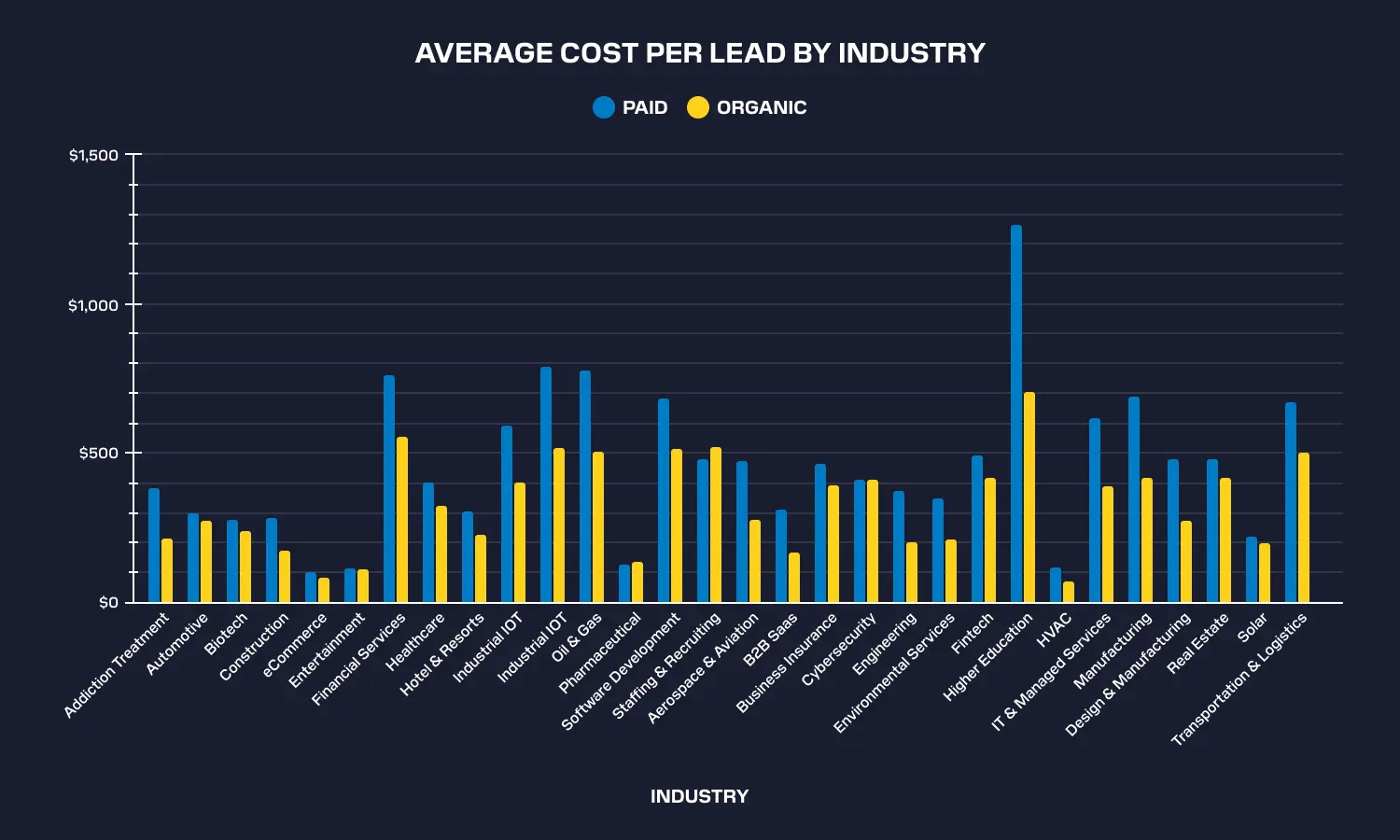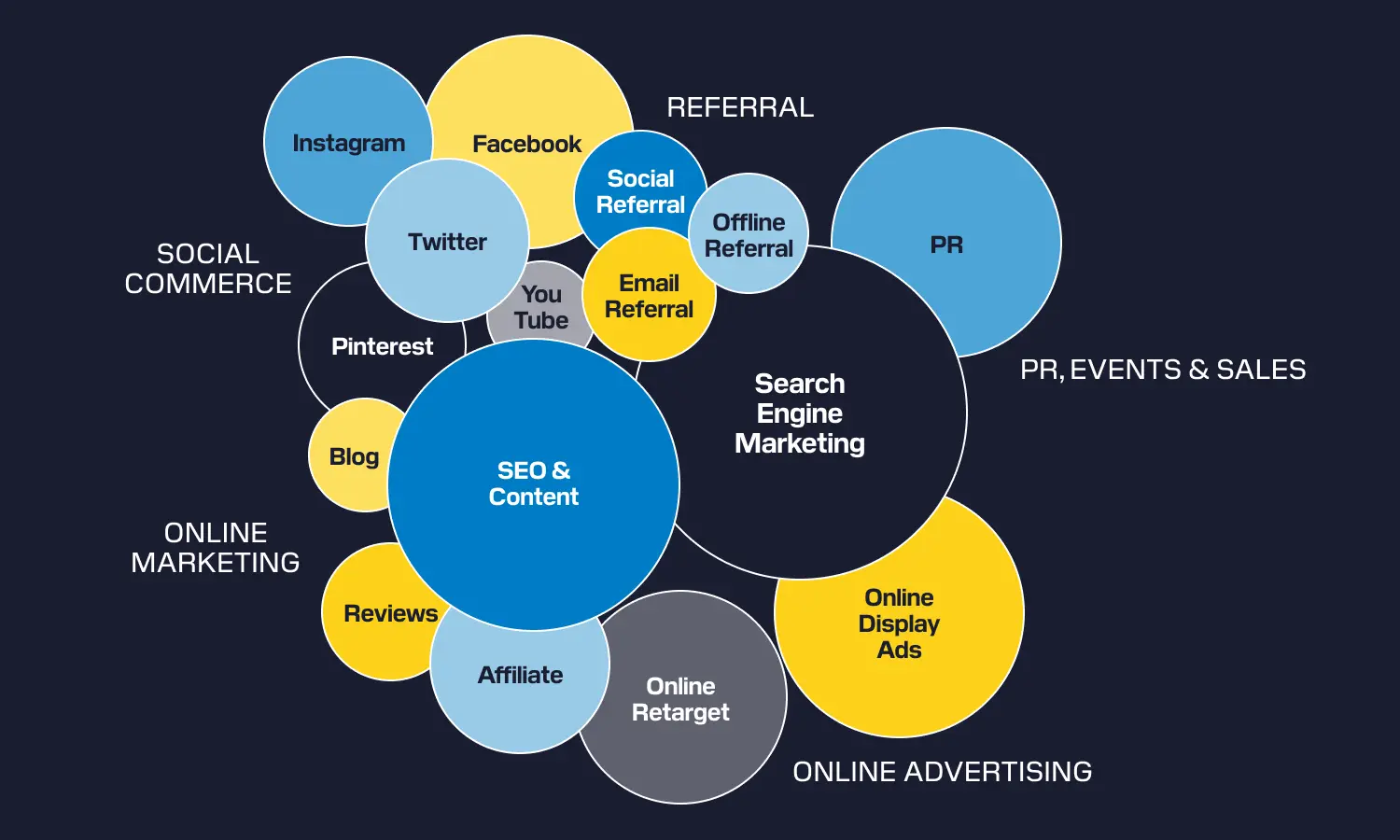How Brands Should Allocate Digital Marketing Budgets

All brands operate with limited time and resources at their disposal. Digital marketing budgets are a reflection of that reality.
With so many tactics and channels available, brands assembling their quarterly or annual budgets face the constant risk of over or under-investing in the wrong areas. The question becomes: “What kind of digital marketing budget does it take to stay competitive in the new landscape of always-on digital?”
As investments in digital ad spend increase, so does the competition. Oberlo reports global digital ad spending will jump to $870.9 billion by 2027. For every $4 a business spends on ads in 2027, $1 will go to digital ads.
How will you spend this $1 between social ads, influencer marketing and other channels? Striking the right balance for marketing budget allocation is a question on everyone’s mind. Fortunately, we’ve got answers.
How Much To Invest in Marketing
According to Gartner’s CMO Spend and Strategy Survey, marketing budgets fell from 9.5% of total revenue in 2022 to 9.1% in 2023. 75% of CMOs say they’re being told to do more with less.
Because of this, 86% of marketers reported they must make changes to their marketing function to get “sustainable results.”

Marketing leadership isn’t the only group impacted by these trends. 86% of all marketers say they’ll need to significantly alter their approach to continue driving results.
With all this in mind, how much of your company’s revenue should you spend on marketing?
In reality, there’s no one right answer here. The ideal marketing spend depends on factors like:
- Your customers.
- Your brand’s industry.
- The size of your company.
- What high-value outcomes your company is trying to achieve.
But you can look at benchmarks from other companies as a starting point.
According to The 2023 CMO Survey of 2,747 marketing leaders, the mean marketing budget of all respondents made up 10.89% of total revenue, with a 95% confidence interval around the mean of 8.79% to 12.98%. As a percentage of a company’s total budget, the mean marketing spend was 12.3%.
So, do you fall on the high or low end of that spectrum? This largely depends on your marketing goals for the year and the maturity of your go-to-market strategy. Consumer brands breaking into a new category, for example, might target a far more aggressive marketing budget than established players in a legacy niche.
Here’s a good rule of thumb for digital marketing budget allocation:
- Budgets for aggressive/high-growth models: 12% – 15% overall revenue.
- Budgets for staying competitive: 8% – 11% overall revenue.
- Budgets for conservative/maintaining status quo: 5% – 8% overall revenue.
We should note that these are just recommendations — they’re not set in stone. Depending on your company’s needs and goals, you can always go above or below the thresholds.
Digital Marketing Budget Predictions
For many brands, the traditional budget breakdown comes between digital and traditional marketing resource allocation. With more and more consumers moving online, marketing budgets are trending increasingly toward digital.
But in 2023, marketing budgets are being trimmed across the board. Nearly 70% of respondents in The CMO Survey said their businesses lack the funds for a successful marketing strategy.
As economic volatility rises, businesses will have price disruptions in their marketing plans. Unforeseen surprises down the line, such as shifting budgets and internal realignment, could take a toll on marketing efforts. So, it’s best to prepare beforehand. Companies should leave a margin in their budget for potential surprises.
Even the unthinkable — cutting down on tech spend in the marketing budget — is happening. In fact, 75% of CMOs are being told to cut investments in technology and tools to support their current marketing strategies.
The share of digital marketing budget in the total marketing budget has also dropped a full percentage point to 55% per The 2023 CMO Survey.
All told, CMOs will have to do more with less now. That means your budget allocation needs to be even more strategic. And budget cuts across the board will impact both traditional and digital marketing spend.
Marketing budgets haven't bounced back to their pre-pandemic levels. So, there’s a greater emphasis on efficiency and creativity.
Focusing less on quantity and more on quality is the key. CMOs will also have to work with less tech since many businesses see “martech” as a promising avenue for cost-cutting.
Solving Digital Marketing Budget Allocation
How do you know what channels deserve bigger budgets than others? There are many potential ways to reach this answer as you’re planning, strategizing and budgeting for your campaign spend. Here are two of them.
Use the Right Measurement Methodologies
To identify which of your current channels are driving consumer behavior towards business goals, consider using multi-touch attribution (MTA) models. MTA tools help you understand the consumer path to conversion using multiple consumer touchpoints. You can also deduplicate attribution across platforms and have an untangled view of channel interaction.
To specifically answer where to invest incremental funds, use media mix modeling (MMM). With MMM, you can measure the impact of digital and non-digital channels on business goals, as well as determine diminishing ROIs for each channel. MMM can also help you predict trending and budget optimization.
If you want to pinpoint the effectiveness of a new channel, you can run incremental lift studies, which identify the precise lift of marketing channels toward customer acquisition or conversion. Incremental lift studies are customizable to various KPIs and channels — including non-digital activity — and can help you answer the specific impact marketing campaigns have on capturing new customers.
These are just a few examples. However, the right measurement methodologies depend on how much data you have, your martech stack, what measurement solutions you already have in place and ultimately, what answer(s) you’re trying to find.
Understand Your Customers
It goes without saying that you need to know who your customers are, what they care about, where they spend time and what influences their buying decisions. Dive into your first-party data, do customer research and uncover critical trends to have a true understanding of prospective and existing customers across their buying journeys. People-based marketing solutions can help you get the most of your data.
Some questions to ask to learn more about your ideal customers include:
- Where do our customers go to research products?
- Where do our customers go to find solutions to this problem that we can solve?
- Who do our customers listen to? What channels do they use to find influence?
- What role in the customer journey does each online channel play for this persona?
Understanding these nuances can not only refine your marketing strategies, but also strengthen your connection with customers, fostering long-lasting relationships built on trust and relevance.
6 Steps To Create a Digital Marketing Budget
Digital marketing budget allocation is no small feat. It must be more strategic than wishful — and more data-backed than gut instinct-based. Moreover, it should align back to business objectives.
Here are six steps to ensure you’re on the right path.
1. Determine Your Marketing Budget
Before you allocate a budget for the digital side, calculate your overall marketing budget. The more competitive your industry is, the higher your budget will be. Some industries require a large marketing budget by default due to the higher cost per lead and click. Examples include businesses in higher education, finance services, transportation and logistics, healthcare, legal services and a host of B2C categories.

2. Decide on Goals
What do you want your marketing plan to accomplish? For example, do you want to build more credibility or generate more leads?
Your goals will ultimately decide how much you spend on different channels. For example, you could consider using SEO and content marketing tactics if your goal is to maximize organic visibility and build authority on a topic. SEO is usually less expensive than running paid campaigns and is built up over time.
But if you want faster results, you may want to consider running paid ad campaigns. The ad spend costs can add up in this case. Similarly, if you want to improve customer loyalty or boost sales, you might take the email marketing route.
3. Get Historical Data
How well did your digital marketing campaigns perform last quarter or year? That could set the tone for your budget moving forward.
Take strategies that worked, and leave the ineffective ones behind. Did your Meta ad campaign bring in more leads? Adopt it for the future.
Were the results from content marketing efforts unremarkable? It might be time to reassess.
4. Select the Channels

Let's say you've chosen to use social media and email as two main marketing channels. Here’s what a social media budget typically entails:
- Content generation (hiring writers and designers, buying tools, etc.)
- Ad spend
- Market research
For email marketing, you’d have to spend money on curating an email list. Then there are email marketing tools’ subscription costs and the money you’d spend on copywriters and designers.
Similarly, you could select other channels like SEO, influencer marketing, SEM, retail media networks, and digital audio advertising (podcasts). Their expenses will also be unique, depending on their components.
5. Account for Production Costs
For your marketing strategies to be successful, the production should be top-notch. Here are some production costs you’ll have to add to your budget:
- Market research
- Salaries (in-house teams)
- Outsourcing costs (agencies or freelancers)
- Software subscriptions
- Tools
- A/B testing
6. Factor In Additional Costs
It’s better to be prepared than to be caught off guard. Make sure you have a clear idea of the possible additional costs. These could include:
- Contract cancellation fees
- Legal consultations
- Tech support services
- Content/dDesign revisions
- Legal consultations
Finally, compile the costs into a comprehensive budget and put your marketing efforts in motion.
Common Digital Marketing Expenses
You now know how to craft a digital market budget. What most businesses struggle with is the fifth step5, where they have to consider digital marketing expenses. Here’s a few common expenses below so that you can get an idea of what to look at.
Content Marketing
In a survey conducted in late 2022, 49.2% of digital marketers said their content marketing budget will increase in 2023. These findings are consistent with Neil Patel's survey. He found that 83% of companies are raising their content production budget.
Content marketing costs will be high if you plan on working with a professional agency for content creation. However, it still can be relatively cheaper than hiring a team of in-house specialists. So, if you’re on a strict budget, opting for a content marketing agency could be a smart move.
Paid Search
While SMBs spend $1,000 to $10,000 monthly on paid search campaigns on Google, larger businesses may spend up to $50 million annually. If you plan to use paid search in your digital marketing budget, allocate the budget accordingly.
Social Media Spend
Social media is quickly taking over other avenues as the preferred method for digital marketing campaigns. That's why Statista forecasts that social media ad spending will amount to $358 billion by 2026.
With social media facilitating a bigger role in buying processes, spending on social media marketing has become necessary for many industries. A significant portion of your marketing spend will go here.
That is also correlated with a lower search ad spend. People now use TikTok and other social media channels rather than search engines to find the products and services they need. As a result, social advertising budgets have peaked, while search advertising is getting less investment.
CRM Tools
Customer relation management systems (CRMs) such as Salesforce, Hubspot and Netsuite have become must-haves for B2C and B2B businesses alike.
Though CRM tools have a free tier, you’ll often find that they’re not robust enough for larger businesses. Factor in your CRM costs, which are often high, ranging from hundreds to thousands of dollars a month in subscription and support fees.
Prove Your Marketing Works
How can you guarantee your marketing budget will be approved or increased? Prove your marketing works using the right measurement methodologies — and make sure that, as much as possible, your results are grounded in KPIs that matter to non-marketing executives.
The key is to back your budget-related decisions with data. Paul Frampton, the president of our sister company CvE, along with Goodway Group’s experts, Chief Media Officer Stephani Estes and Scott Blessman, our vice president of analytics and data insights, touch on the subject in this on-demand webinar.
When the marketing team can identify the red thread from the visitor to the customer acquisition and show how your marketing campaigns drive revenue outcomes, you can justify your budget in the boardroom.
Budgeting for the Future of Digital Advertising
The future of digital advertising is bright and full of complexities. But the foundations remain simple. Plan, perform, review and iterate.
By allocating your digital marketing budget to cover the funnel that drives the business, you’ll align your spend with the most high-value activities.
Eager for more actionable insights on the future of all things digital?
- Learn how to measure your GTM success.
- Read how to spur marketing revenue growth with a media mix model.
- Dive into our guide on proving the impact of your marketing strategy.





